We take pride in our solid wood flooring.......
We pride ourselves in producing British wood flooring sourced from trees grown here in the UK and so thought we’d ask some questions surrounding solid wood flooring vs engineered. We can offer full traceability of all of our floorboards right back to the site that they grew, giving you peace of mind that your flooring is 100% sustainable and British through and through. We believe the benefits of a solid wood floor far outweigh that of a cheaper engineered alternative, so read on to find out more on the differences between solid wood floors vs engineered.
The first mountain to climb over in the constant small battle of solid wood flooring vs engineered is that yes, our solid wood flooring can be used over underfloor heating, Yey! This photo here shows our floor used over UFH having been laid for 5 years. Approximately 75% of our customers choose to lay our flooring over underfloor heating. We believe that it is only companies with faster production processes and less knowledge that have led to solid wood flooring getting such a bad reputation.
We have loads of handy information to guide your through the process and we always offer full support and views through the process of ordering. Our resource centre here has loads of handy diagrams and information on using our boards with your underfloor heating too.
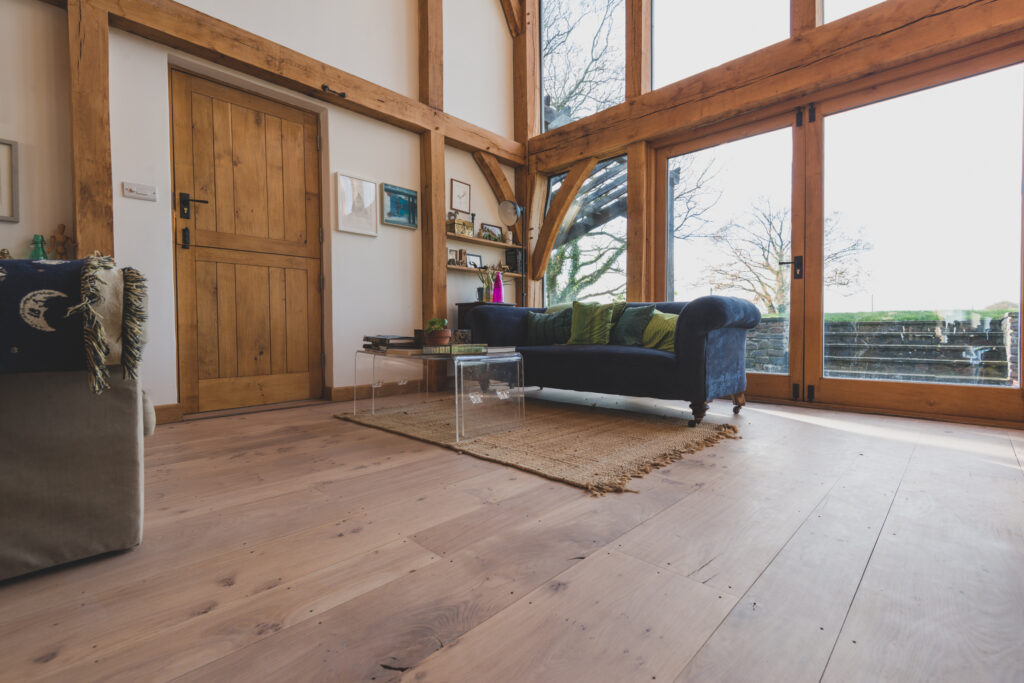
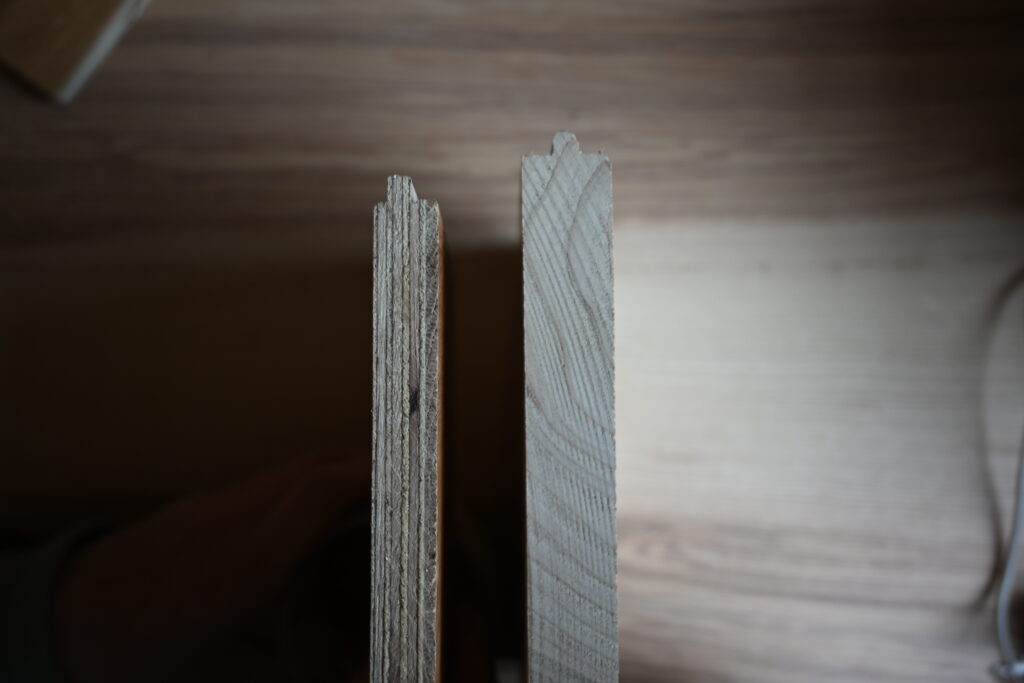
There are zero chemical in our solid wood flooring vs engineered......
Our solid wood flooring is made from a British tree that has been sustainably milled here at our sawmill and workshop in Devon. The entire depth of our floor boards are crafted from a single piece of wood, no glues, no chemicals and no outsourcing of techniques across the globe.
An engineered flooring however is made up of different components. Layers upon layers of different glues and even different woods. The makeup of an engineered board is most often a bottom layer made from a plywood or high density fibreboard, or even a combination of the two. There is then a core layer, which is usually made for the same type of materials as the bottom layer. The boards are then finished with a thin top layer, which is the final veneer. This veneer is chemically bonded to the layers below giving you as close a look as possible to a solid wood board. The potential for harmful chemicals and VOC gases to emit from an engineered board through your home is high compare to the zero risk that a solid wood flooring offers.
With solid wood flooring being thicker than most engineered boards, it is possible to sand back the boards and re-stain them if ever you want to change up the look of your home. Our floorboards are crafted to last for generations to come, not just 20-30 years. We’ve written a fun post here on the 6 most popular wood flooring colours that we come across, so if you are feeling the urge in 10 years time to shake up the colour of your floor, don’t panic, just go ahead and do it.
With an engineered board, because of the thickness of the veneer layer explained earlier, there isn’t the depth for additional sanding. Once your flooring has been picked and laid, that’s it, your choice is final. We much prefer a solid wood floor which offers you, and future generations versatility.
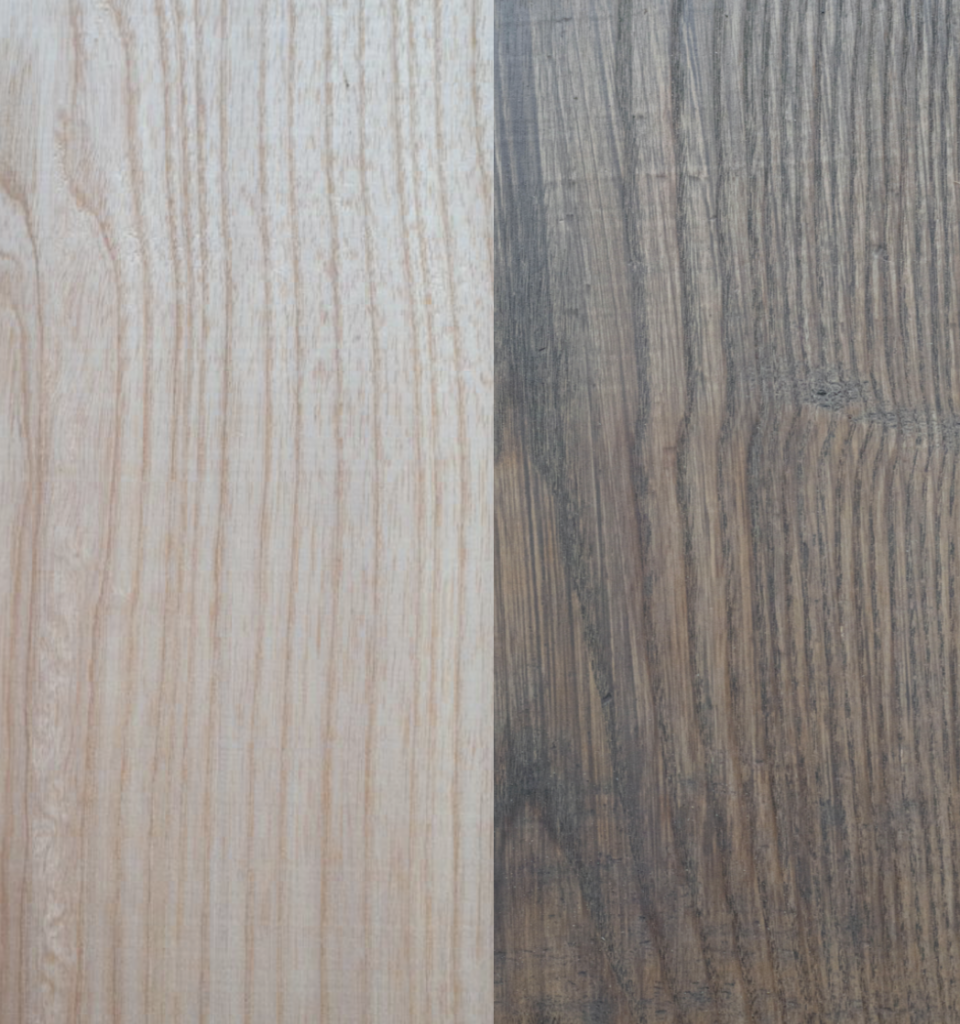
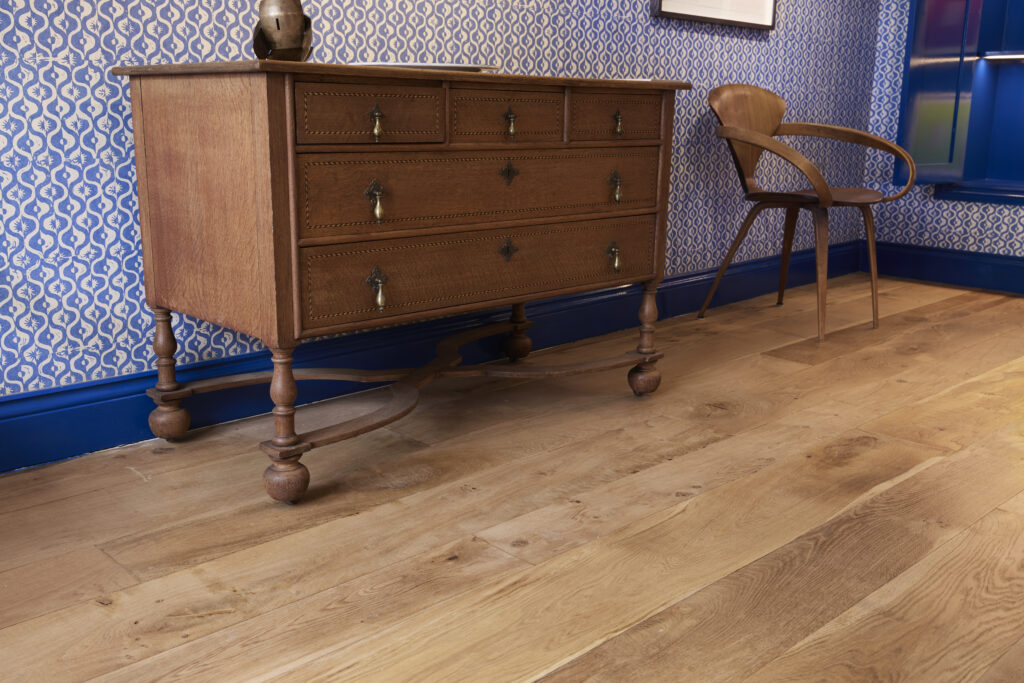
Invest in our solid wood flooring.......
Not only does the durability of a solid wood floor lend itself down redecoration avenues, but it also offers as peace of mind for you and your future home. Solid wood floors are an investment piece that you gift to your home and to generations to come. Engineered floors don’t have a lifetime of generations, and will need to be ripped up and put on a landfill within 30-40 years at a push. With our sustainable wood flooring, this isn’t ever going to be necessary.
We like to know the full story of our trees, which offers you the full story of our flooring. From tree to floorboard we can guide you through the process, show you the people that made your flooring and give you a tour of the yard that crafted your boards. With an engineered board, there are so many components that it would only be with difficulty that would you be able to trace the story of even a single component. The country of origin of the glues? The tree that perhaps made part of the ply? The tree that got made into fibreboard? The other tree from another country used to make the veneer? We have to ask ourselves, is any of this truly sustainable?
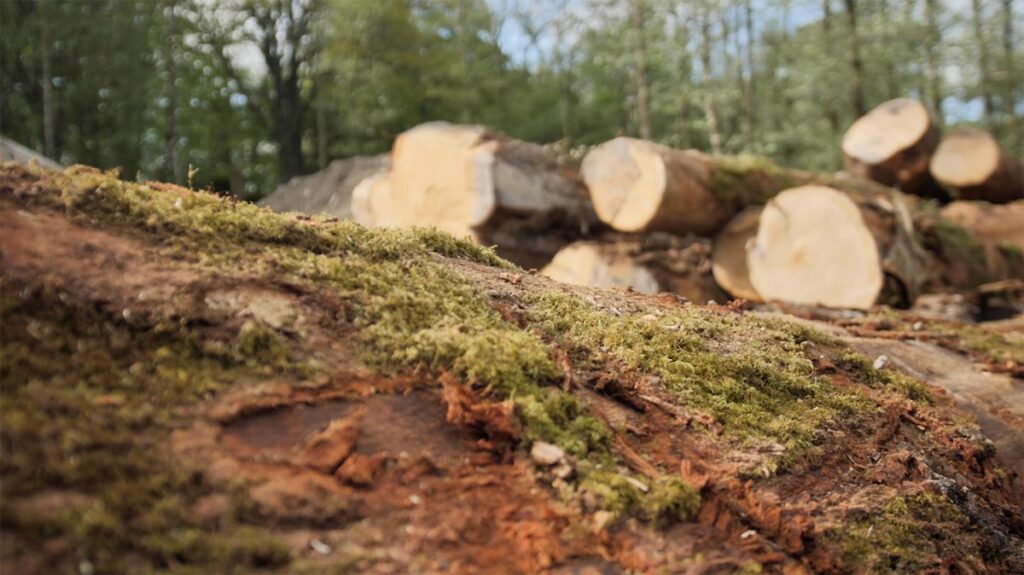
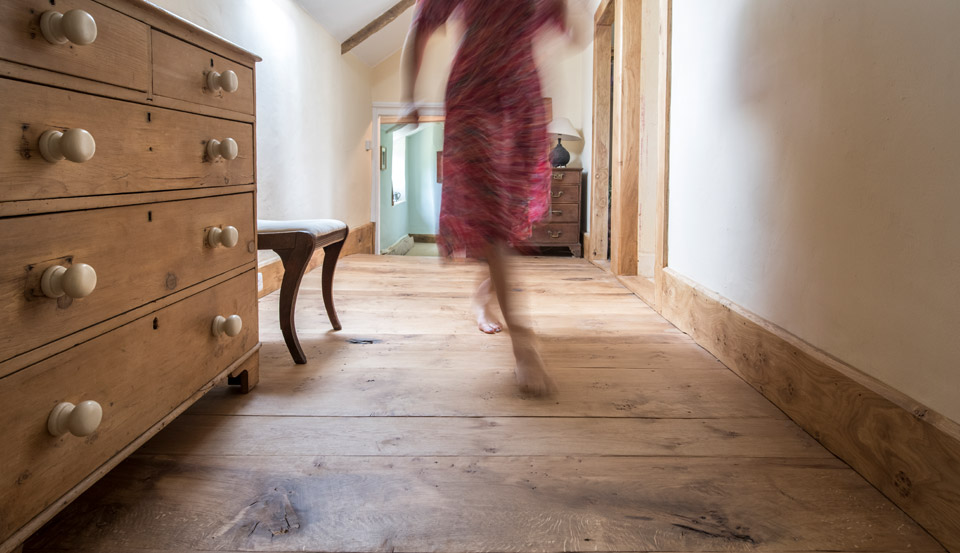
Know the full process of your floor......
We believe that not only does our solid wood flooring act in an unparalleled manner when compared the engineered flooring, but it also looks and feels like a real wood floor too. With an engineered board, you’re standing on a thin veneer of wood, but there is something about standing on the thickness and durability of a real piece of wood that doesn’t compare.
We of course love solid wood flooring here, and wouldn’t wish for anything else other than authentic solid British wood flooring on our floors. However, if you have any questions surrounding the mini battle between solid vs engineered, then drop us an email and we’d be more than happy to discuss.





